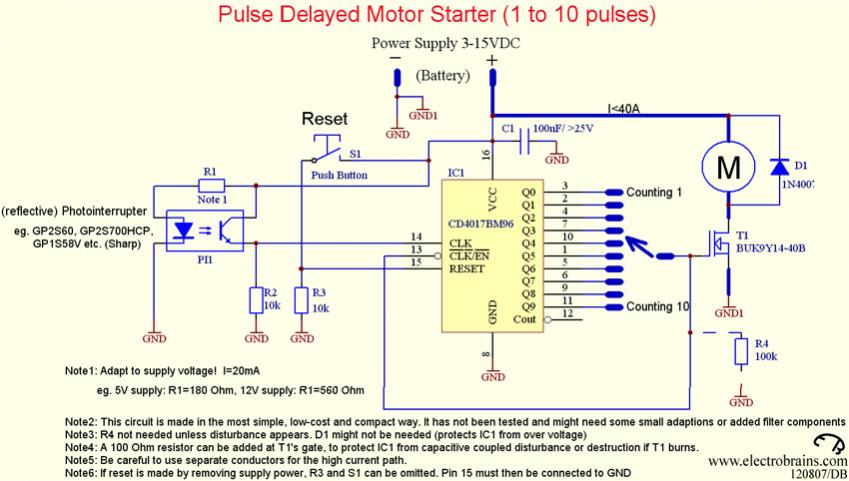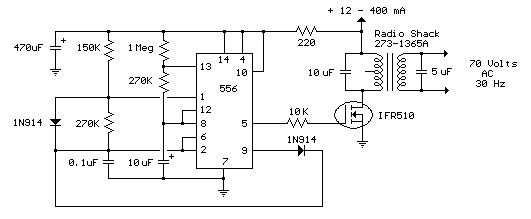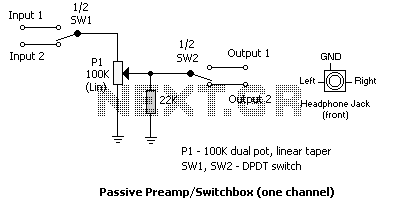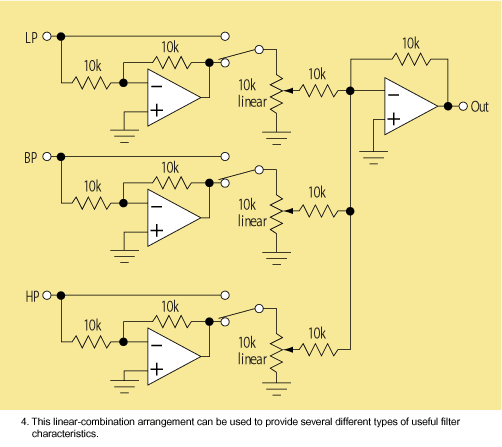
One Transistor Audio Mixer
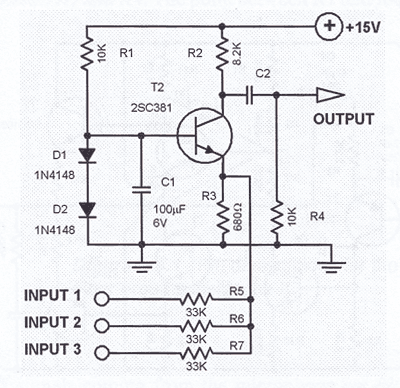
The simplest one-transistor audio mixer circuit diagram available. It utilizes a single transistor and can accommodate multiple audio signals, limited only by the user's budget. BC10.
The one-transistor audio mixer circuit is a fundamental design that demonstrates the principles of audio signal mixing using minimal components. The core of the circuit is a single transistor, which acts as the main amplifying element. This transistor is typically a BC10, known for its suitability in low-power audio applications.
The circuit allows for the mixing of multiple audio inputs, such as microphones or musical instruments. The audio signals are fed into the base of the transistor through coupling capacitors, which block any DC component and allow only the AC audio signals to pass. This configuration ensures that the audio signals can be superimposed without interference from any DC biasing.
The transistor operates in its active region, where it amplifies the combined audio signals. The output is taken from the collector of the transistor, which can be connected to a speaker or further audio processing equipment. The gain of the circuit can be adjusted by varying the resistor values in the emitter and collector circuits, allowing for flexibility in audio output levels.
Power supply requirements for this circuit are minimal, typically operating at low voltages, which makes it suitable for battery-powered applications. The simplicity of this design, combined with the potential for expansion by adding more audio inputs, makes it an excellent choice for basic audio mixing tasks in various electronic projects.The simplest one transistor audio mixer circuit diagram on the net. It has only one transistor and can support as many audio signal as you can afford. BC10.. 🔗 External reference
The one-transistor audio mixer circuit is a fundamental design that demonstrates the principles of audio signal mixing using minimal components. The core of the circuit is a single transistor, which acts as the main amplifying element. This transistor is typically a BC10, known for its suitability in low-power audio applications.
The circuit allows for the mixing of multiple audio inputs, such as microphones or musical instruments. The audio signals are fed into the base of the transistor through coupling capacitors, which block any DC component and allow only the AC audio signals to pass. This configuration ensures that the audio signals can be superimposed without interference from any DC biasing.
The transistor operates in its active region, where it amplifies the combined audio signals. The output is taken from the collector of the transistor, which can be connected to a speaker or further audio processing equipment. The gain of the circuit can be adjusted by varying the resistor values in the emitter and collector circuits, allowing for flexibility in audio output levels.
Power supply requirements for this circuit are minimal, typically operating at low voltages, which makes it suitable for battery-powered applications. The simplicity of this design, combined with the potential for expansion by adding more audio inputs, makes it an excellent choice for basic audio mixing tasks in various electronic projects.The simplest one transistor audio mixer circuit diagram on the net. It has only one transistor and can support as many audio signal as you can afford. BC10.. 🔗 External reference
